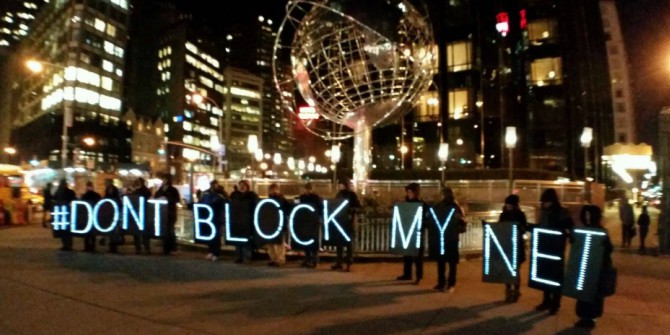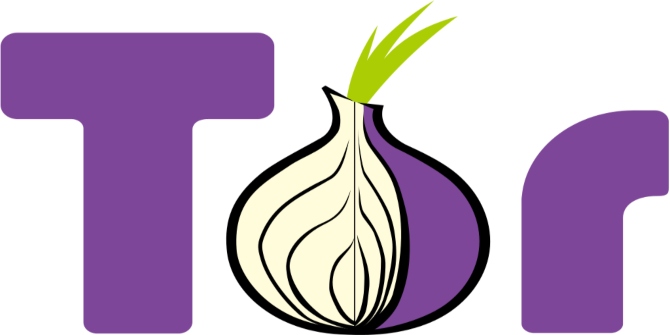
Say what you will about the merits of net neutrality; we are unlikely to reach consensus, much like academics and policy-makers have not reached consensus over the past 15 years ever since the term was put on the policy table. I have explored elsewhere the reasons why I think consensus has been elusive and what to do about it, but suffice it to say here that there are good arguments on both sides, and therefore any policy that categorically sides with one camp or the other is doomed to be wrong on the merits.
But the main problem in the news today is not that the current rules, which are demonstrably pro neutrality, are wrong or unbalanced; rather, the more fundamental question is whether we need rules in the first place at all. If not, then the repeal of the current rules should not spell the disaster that open internet activists fear. In fact, repealing superfluous rules would be good regulatory policy; the most basic premise of regulation is that rules of general applicability, like the ones on net neutrality, should be reserved only for generalisedharm significant enough to justify the unavoidable cost that comes with regulation.
Far from it, not only has the case for net neutrality been weak from the beginning, but a look at all recent legislation reveals that net neutrality is largely a solution to a problem that does not exist. Very few documented cases exist on the docket of regulatory authorities as real-world examples of ISP practices violating the principles behind net neutrality. It is illustrative that FCC’s 2015 Report and Order which enacted the latest rules (the ones under consideration for repeal) did not cite any new evidence in that direction (para 75), but instead relied on evidence included in two previous attempts to enact relevant rules, the 2014 Notice for Proposed Rulemaking (paras 39-41) and the 2010 Report and Order (paras 35-36).
And even in those documents the evidence is scarce and unconvincing: the FCC cites the example of AT&T temporarily blocking Apple’s FaceTime app, which however, following an investigation, the FCC itself found that AT&T had legitimate reasons to block, the example of Verizon blocking certain tethering apps, which the FCC settled, relying not on net neutrality rules but on spectrum licensing rules, and a small number of incidents that date back to 2005-2008 (mainly the 2005 Madison River case and the 2008 Comcast BitTorrent case), which served as the main impetus behind net neutrality legislation in 2010. All in all, the entire record on the need for net neutrality rules contains fewer than five confirmed cases over the course of a decade.
All the while the EU delayed adopting net neutrality rules thanks to the perceived more intense competition among ISPs, which was seen to act as a safeguard against harmful practices. In a change of heart, relevant rules were adopted by virtue of the Open Internet Regulation in 2015, largely as a response to the findings of a report by the Body of European Regulators for Electronic Communications (BEREC) (recital 3), which showed that European ISPs engage in numerous and various traffic shaping practices (the report was also cited by the FCC in support of its own rules). A closer look, however, reveals that the report does not argue that these practices would amount to a violation of net neutrality principles (and therefore presumably relevant rules should be enacted); it merely documented traffic shaping policies without opining on their legitimacy or threat. Indeed, in its 2017 report on monitoring compliance with the Open Internet Regulation, Ofcom did not identify a single case of net neutrality violation in the UK, despite the continuation of the very practices that BEREC listed.
One could counter that the reason there are only a few incidents is precisely because of the deterrent value of existing net neutrality rules. But this is a feeble argument. Even bypassing the obvious chicken and egg problem, the timing and frequency of net neutrality violations proves nothing about the value of the relevant rules. The documented violations above are spread over a period of time that was only partially covered by net neutrality rules, which leaves little room for correlation between the rules and the violations (or lack thereof).
More importantly, though, even if one was somehow convinced that there is a generalised problem to be addressed, there is a wide spectrum of less onerous measures to be adopted compared to the rules currently in force. Self and co-regulation, regulatory threat, antitrust, and—my personal favourite—antitrust-like regulation, like the proposal put forth (but later rejected) by the FCC in its 2014 NPRM (paras 116-128), are all milder alternatives that are more proportionate to the level of harm currently posed by net neutrality violations.
I do not suggest that the broadband industry works flawlessly and that no oversight is needed. But the current rules, when juxtaposed with the documented threats, feel like an overkill. Regulatory agencies have spent far too much time quibbling about net neutrality, instead of turning their attention to more contemporary and more pressing issues, like harmonising spectrum, interconnection disputes, and connecting the unconnected. But this is the topic of another post.
♣♣♣
Notes:
- This blog post was originally published by LSE Media Policy Project.
- The post gives the views of its authors, not the position of LSE Business Review or the London School of Economics.
- Featured image credit: Pro-net neutrality demonstration in New York City, by Backbone Campaign, under a CC-BY-2.0 licence
- When you leave a comment, you’re agreeing to our Comment Policy.
 Konstantinos Stylianou is Lecturer in Competition Law and Regulation at the University of Leeds’ School of Law.
Konstantinos Stylianou is Lecturer in Competition Law and Regulation at the University of Leeds’ School of Law.






I like how you are attempting to appear neutral, however you are failing. I am going to post many more violations than you mention below. They all happened while there was a fear of NN regulations of some sort or the understanding that NN rules are not needed because the Internet is already open and free (some claim). Regardless of how you to try to water them down, as you did with the ones you mention, they are all still relevant for the sole reason in that they are things that have already been attempted and example of things that will be attempted again if they are not restricted from doing so. The shear greed of man and the greater greed of corporations guarantees that and only a fool would argue otherwise.
Net Neutrality Violations:
MADISON RIVER: In 2005, North Carolina ISP Madison River Communications blocked the voice-over-internet protocol (VOIP) service Vonage. Vonage filed a complaint with the FCC after receiving a slew of customer complaints. The FCC stepped in to sanction Madison River and prevent further blocking, but it lacks the authority to stop this kind of abuse today.
COMCAST: In 2005, the nation’s largest ISP, Comcast, began secretly blocking peer-to-peer technologies that its customers were using over its network. Users of services like BitTorrent and Gnutella were unable to connect to these services. 2007 investigations from the Associated Press, the Electronic Frontier Foundation and others confirmed that Comcast was indeed blocking or slowing file-sharing applications without disclosing this fact to its customers.
TELUS: In 2005, Canada’s second-largest telecommunications company, Telus, began blocking access to a server that hosted a website supporting a labor strike against the company. Researchers at Harvard and the University of Toronto found that this action resulted in Telus blocking an additional 766 unrelated sites.
AT&T: From 2007-2009, AT&T forced Apple to block Skype and other competing VOIP phone services on the iPhone. The wireless provider wanted to prevent iPhone users from using any application that would allow them to make calls on such “over-the-top” voice services. The Google Voice app received similar treatment from carriers like AT&T when it came on the scene in 2009.
WINDSTREAM: In 2010, Windstream Communications, a DSL provider with more than 1 million customers at the time, copped to hijacking user-search queries made using the Google toolbar within Firefox. Users who believed they had set the browser to the search engine of their choice were redirected to Windstream’s own search portal and results.
MetroPCS: In 2011, MetroPCS, at the time one of the top-five U.S. wireless carriers, announced plans to block streaming video over its 4G network from all sources except YouTube. MetroPCS then threw its weight behind Verizon’s court challenge against the FCC’s 2010 open internet ruling, hoping that rejection of the agency’s authority would allow the company to continue its anti-consumer practices.
PAXFIRE: In 2011, the Electronic Frontier Foundation found that several small ISPs were redirecting search queries via the vendor Paxfire. The ISPs identified in the initial Electronic Frontier Foundation report included Cavalier, Cogent, Frontier, Fuse, DirecPC, RCN and Wide Open West. Paxfire would intercept a person’s search request at Bing and Yahoo and redirect it to another page. By skipping over the search service’s results, the participating ISPs would collect referral fees for delivering users to select websites.
AT&T, SPRINT and VERIZON: From 2011-2013, AT&T, Sprint and Verizon blocked Google Wallet, a mobile-payment system that competed with a similar service called Isis, which all three companies had a stake in developing.
EUROPE: A 2012 report from the Body of European Regulators for Electronic Communications found that violations of Net Neutrality affected at least one in five users in Europe. The report found that blocked or slowed connections to services like VOIP, peer-to-peer technologies, gaming applications and email were commonplace.
VERIZON: In 2012, the FCC caught Verizon Wireless blocking people from using tethering applications on their phones. Verizon had asked Google to remove 11 free tethering applications from the Android marketplace. These applications allowed users to circumvent Verizon’s $20 tethering fee and turn their smartphones into Wi-Fi hot spots. By blocking those applications, Verizon violated a Net Neutrality pledge it made to the FCC as a condition of the 2008 airwaves auction.
AT&T: In 2012, AT&T announced that it would disable the FaceTime video-calling app on its customers’ iPhones unless they subscribed to a more expensive text-and-voice plan. AT&T had one goal in mind: separating customers from more of their money by blocking alternatives to AT&T’s own products.
VERIZON: During oral arguments in Verizon v. FCC in 2013, judges asked whether the phone giant would favor some preferred services, content or sites over others if the court overruled the agency’s existing open internet rules. Verizon counsel Helgi Walker had this to say: “I’m authorized to state from my client today that but for these rules we would be exploring those types of arrangements.” Walker’s admission might have gone unnoticed had she not repeated it on at least five separate occasions during arguments.
Mulitple ISPs: Allowed their peering ports to saturate causing Netflix subscribers to receive poor quality or no video reception of the services they were paying Netflix for. Netflix offered several mutually beneficial solutions to the ISPs that required little to no money invested by the ISP. However, the larger of them refused as the ISPs were either creating or getting into the video delivery service themselves. Shortly after the Title II classification, all problems with Netflix ceased. Another court case (NY’s AG vs Charter) concerning a completely different issue at hand, revealed through subpeaned emails confirming that this was an intential issue beging created to extract additional revenues out of Netflix.
Verizon: In July 2017 – User discovered that, without being told, their connection to Netflix and YouTube was being throttled to 10mb. This was confirmed by users by using Netflix’s simple speed test site Fast.com which would result in no higher than 10mbps test. Users were able to bypass this limit by using VPN or testing on other speedtest sites. Verizon PR released a statement AFTER they were caught stating:”We’ve been doing network testing over the past few days to optimize the performance of video applications on our network. The testing should be completed shortly. The customer video experience was not affected.”. Though the throttling of the service above what is needed for a standard HD stream is not the major concern. What is, is that they did it in secret and only came out with a flimsy excuse after it because known and confirmed by many on the Internet.
Skippy, you tried spamming an older version of the same list on MIT’s Technology Review and got smacked down. The only addition is the Verizon July 2017 addition. I’ll let the author’s words from the comments of the MIT’s Technology Review article speak:
“The list is misleading at best. The only example of website blocking on the list is a week-long action by Telus against two websites doxxing and advocating violence against its employees. Telus blocked the sites and sought an injunction from the courts. When the injunction was granted – which took a week – the offending pages were taken down and the block was lifted.
Does that suggest website blocking needs to be banned?”
And then there’s the inconvenient truth that Title II doesn’t stop blocking and throttling websites at all, as long as the ISPs are open about it.